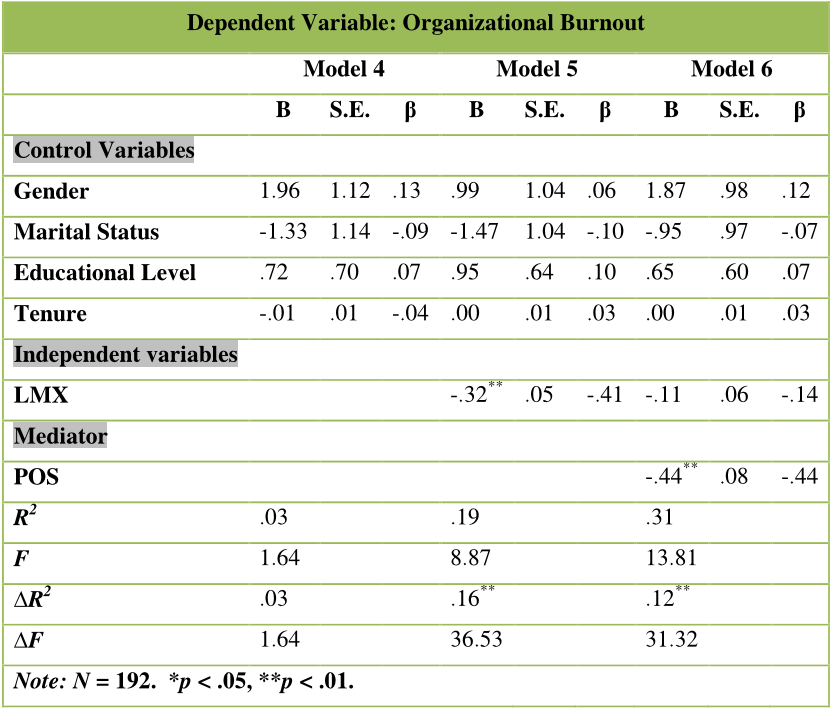




read more








Demographic variables of gender, marital status, educationlevel, and tenure have been considered as control variables for the purpose of this study.
a high-quality relationship with one’s leader can have a positive effect on performance and affective outcomes (Gerstner & Day, 1997).
In relationships marked by high LMX quality, the increased support by the supervisor may help reduce uncertainty and ambiguity of the subordinate (Harris & Kacmar, 2006).
Because the original scale is unidimensional and has high internal reliability, the use of shorter versions does not appear problematic (Rhoades & Eisenberger, 2002).
social exchange research hasestablished importance of quality of leader-member exchange (LMX) for organizational outcomes but research on ‘how’ aspects of the association are still lacking (Ilies, Nahrgang, & Morgeson, 2007).
As the person-organization fit affects one’s experience of the job, it is therefore likely to affect burnout (Siegall & McDonald, 2004).
Statistics confirmed the significance of mediation analysis for OID mediating relation of LMX quality (z = -2.74, p=.006 for LMX as independent variable) and burnout.
Activities like induction and training of new personnel involve high costs thereby increasing the relevance of turnover (Siong, Mellor, Moore & Firth, 2006).